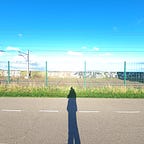Sporadic & belated posts— Art & Artists in Vienna
It’s been a good two years since my last photo essay, but neither has the travel stopped, nor has the writing or the photographing. I guess I just got tired of publishing photo essays (with most of my energy being spent on my other publication), but it could majorly be the fact that life got in the way with thesis, internship, portfolios, job hunting, all piling up on me, one after another. Now, with time on my hands, an itch to share and most importantly, clarity in my head, I have decided to share with you, a number of photo essays in no particular order (just to irk myself, 'cause I love everything to be sooo organised and planned). Here’s the first of many —visiting the Museum Quartier in Vienna, this past winter.
I had returned to Budapest much sooner than expected, and with this came the opportunity to revisit Vienna. So, straight away a day trip was devised, this time only aimed at only ambling around in the famous art galleries of the city. After a few Google searches and a little bit of reading, we zoomed in on visiting the Leopold Museum, which contained the works of Gustav Klimt, Egon Schiele, Oskar Kokoschka, and Richard Gerstl and MUMOK, which housed more contemporary artworks. Here’s MUMOK from the outside,
and from the inside,
If you aren’t the one to gaze at paintings of yore, MUMOK will be the museum for you. Containing more installations and interactive art, MUMOK was the fun museum, with art that you can walk in and out of, play with and touch.
The whole theme of the exhibition was Vertigo — optical illusions in various forms that can manipulate your senses. There were laser projections, digital videos with piercing sounds and vivid shapeshifting colours, reminiscent of the 90’s Windows wallpapers we used to stare at as kids, and a room filled with wind chimes, almost as large as a person, which you had to part to enter. Apart from that, there was a fascinating collection of drawings that had experimented with optical illusions and perspectives, which had to be viewed through peepholes, or with the help of a mirror or by just… staring hard enough, or tilting your head a little.
There is also the basement level, with paintings by Alfred Schmeller which are equally trippy, with its use of dazzling bright colours, dots of various shapes, and lines of various intensities.
After this fun and offbeat museum, we had to tread back into the traditional route and made our way to the Leopold Museum, which is located right off the MUMOK. If MUMOK gave off a cold look with its monolithic mammoth exterior and steel interiors, Leopold Museum was much cozier and warmer.
The Leopold is the more traditional museum of the two, but nevertheless still warrants a visit. It contains paintings, sculptures, furniture, majorly from the Vienna Secession.
There was an added bonus of a Japanese art exhibition featured in one of the smaller exhibition spaces in the Quartier, which “goes in search of two concepts that denote behavioural codes in Japanese society — tatemae (“masquerade”, which relates to the expectations of the community) and honne (which refers to feelings hidden from the community) — dual principles that are enormously influential in Japanese society — and it investigates their role in contemporary Japanese art.” It was quite an attractive and thought-provoking showcase, with artworks that questioned, criticized and explained the nuances of the Japanese culture from a native’s view, complete with digital art, videos, audios, and sculptures. You can read more about it here, here and here.
Towards the end of the day, we retired to the Hundertwasserhaus and the adjacent Hundertwasser village,
The village at the first sight seemed to be breaking every rule of rhythm and composition, with every column distinctly different from the other, from its shape to size to colour; the flooring winding from a smooth black colour to exploding to a zillion multicoloured broken pieces, some of them climbing onto the walls of the stores, while others halting at random. It was like being inside a funhouse at a fair, dazzling yet disorienting (maybe this village would have been a great exhibit at the MUMOK). But as you spend more time inside, the place slowly grows on you. You accept its whimsical design, its narrow paths, and the utter outburst of colours, a reminder that breaking the rules is the number one rule in art.
